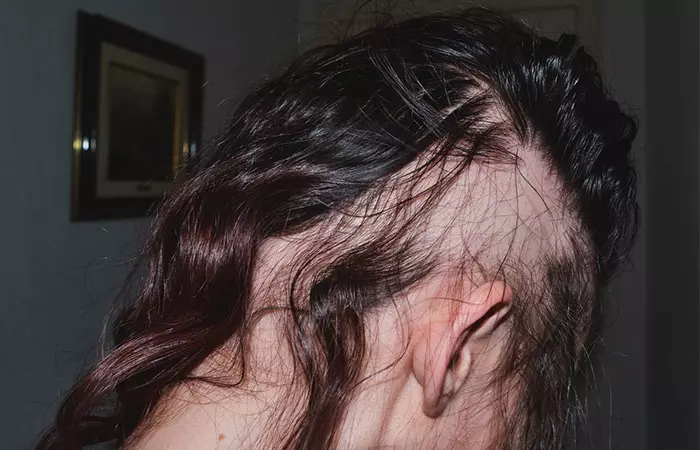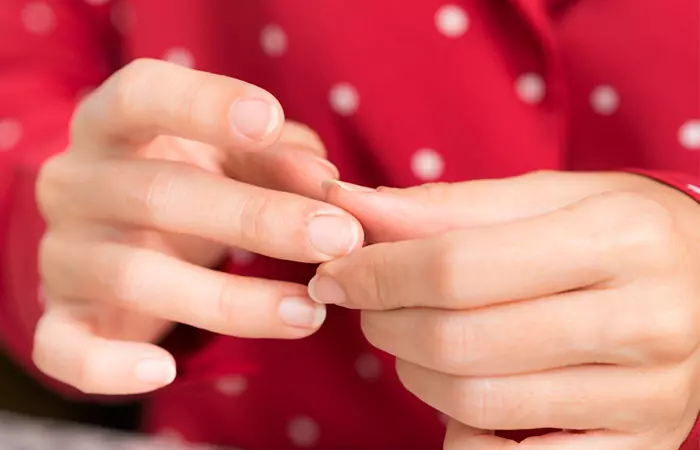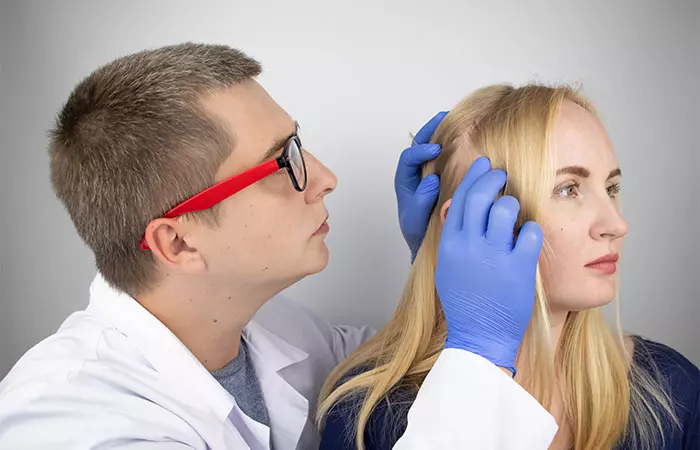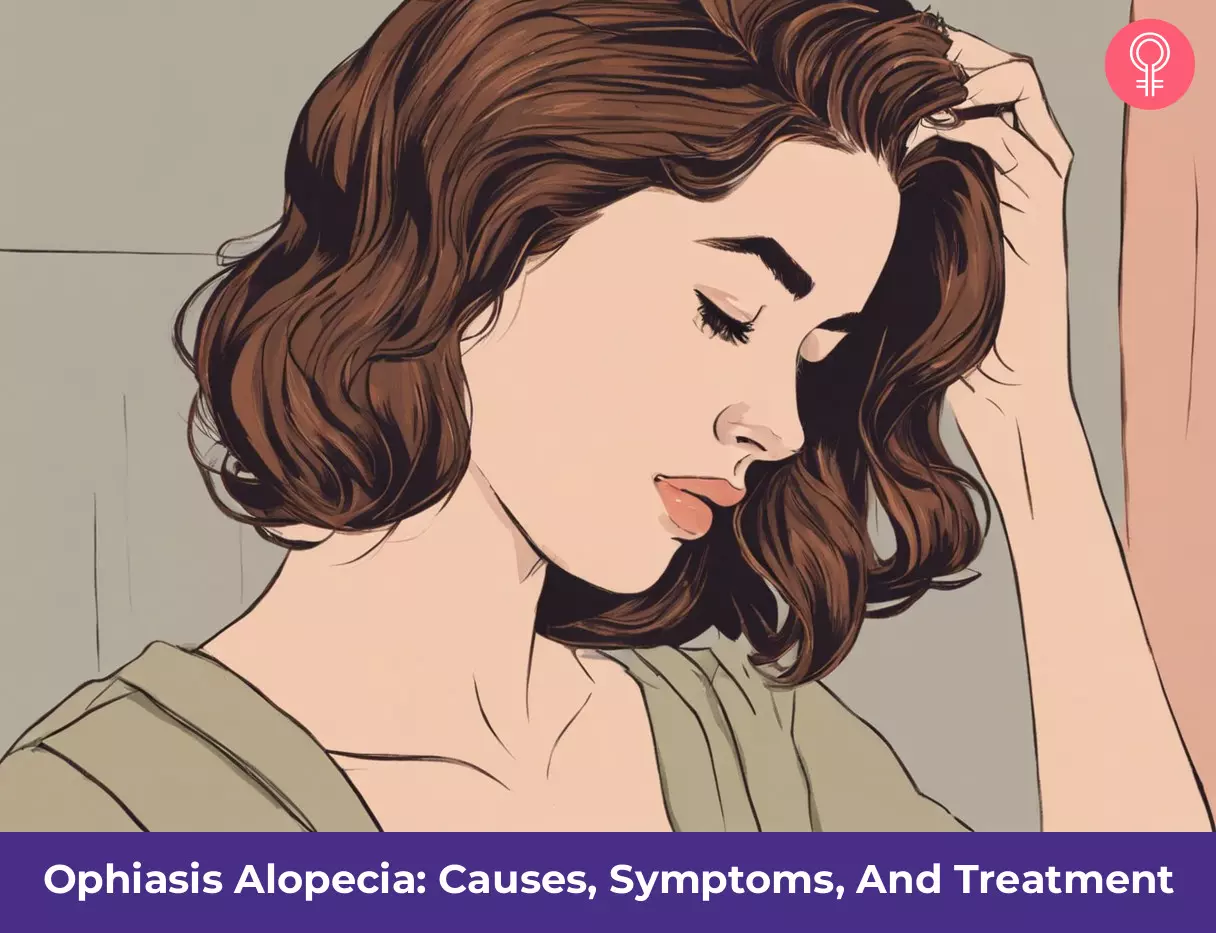What Is Ophiasis Alopecia?
Ophiasis alopecia is a subsection of alopecia areata, an autoimmune disease. This condition is characterized by snake-like symmetric hair loss or hair thinning that often occurs at the back of your scalp. In some individuals, the hair fall may manifest on the sides of the scalp as well. Abbie, a lifestyle blogger, shared her Ophiasis alopecia journey with her bloggers regularly. In one of her posts, she described the extent of her condition. She said, “Covering up patches gets harder by the day and the rate my hair is falling out has seemed to have escalated once again (i).” There are different types of hair loss, Ophiasis being one of them. It is known to affect younger people and is believed to be difficult to treat. It does not respond well to most medications. What causes this type of alopecia? We will explore the causes in the next section.
Causes Of Ophiasis Alopecia
Ophiasis alopecia is an autoimmune condition caused by a malfunctioning immune system . The white blood cells produced by the immune system start attacking the hair follicles. This leads to inflammation and eventual hair loss (2). Ophiasis alopecia (and alopecia, in general) is almost always related to genes. Those with a family history of this condition are most likely to experience it (3). One misconception prevalent among people is that ophiasis alopecia could be caused by extreme stress. While extreme stress may cause temporary hair loss, there is no research linking it to alopecia. Let us now take a look at the signs and symptoms of ophiasis alopecia.
Signs And Symptoms Of Ophiasis Alopecia
Ophiasis alopecia is often seen in young adults, although it may occur in the later stages of life too. The major symptom of this condition is hair shedding in the characteristic snake-like pattern. One may also experience changes in nail color and texture. Nails with white spots and lines or nails losing their shine are the other signs to watch out for. As per anecdotal evidence, thinning of fingernails and toenails could also be the early signs of ophiasis alopecia. Another sign of ophiasis alopecia is the loss of thick, long hair and an increase in miniature hair patterns in the affected areas (4). Let us take a look at certain treatment methods that may help keep ophiasis alopecia under control.
Treatment For Ophiasis Alopecia
1. Minoxidil
Minoxidil is a popular over-the-counter medication useful for hair regrowth (5). The medication is available in liquid, foam, and cream formulations and is very easy to use. Applying the medication to the affected areas may help with hair regrowth. However, one must be aware that the medication can take anywhere between 6 months to 1 year to show its effects. Ophiasis alopecia may not respond to medications quickly, and this may mean a longer wait for some. Patience is key. Note: Consult your doctor before using minoxidil for treating ophiasis alopecia.
2. Corticosteroids
Corticosteroids are another popular medication for alopecia areata hair loss treatment (3). Their anti-inflammatory properties may help suppress the inflammation caused by a malfunctioning immune system. Corticosteroids are available as injections and topical ointments.
3. Microneedling
Microneedling paired with red light therapy could help in the treatment of ophiasis alopecia (4). The method involves small punctures made on the scalp with microneedles. These continuous, small punctures may promote collagen production and help with hair regrowth.
4. Hair Transplantation
NNot always can medication help with hair growth. In such cases, opting for hair restoration procedures like a full hair transplantation might be a good idea. The process involves removing small patches of hair from the scalp’s unaffected areas and planting them on the affected areas.
Preventing Ophiasis Alopecia
Unfortunately, there is no way to prevent ophiasis alopecia as it is an autoimmune disorder primarily caused by genes. However, you may delay its onset by keeping your immune system healthy and consuming foods rich in anti-inflammatory properties. Such foods include broccoli, blueberries, and salmon. How long does Ophiasis alopecia last? Ophiasis alopecia is an autoimmune disease that can be traced back to the genes. It cannot be cured, but you may manage the condition with adequate medical treatment. What is the fastest way to cure alopecia? Alopecia can’t be cured as it is an autoimmune disorder. However, you can manage the condition and maintain your hair health with proper treatment, which may involve using anti-inflammatory drugs and corticosteroids to suppress the immune system. What is the difference between alopecia ophiasis and sisaipho? Alopecia ophiasis causes band-like hair loss around the sides and back of the scalp, while sisaipho causes symmetrical scarring hair loss on the sides and back of the scalp. What is ophiasis alopecia in kids? In children, it typically affects the back and sides of the scalp, while leaving the hair at the top of the head intact. What is the prognosis for people with ophiasis alopecia, and are there any long-term complications or health risks associated with this condition? Ophiasis alopecia has variable prognoses; some patients have temporary hair loss, while for others it could proceed to more severe hair loss or be a persistent issue. Even though this condition poses no immediate health risks, hair loss can have a significant emotional impact, especially on young children. How can ophiasis alopecia affect a person’s quality of life, and what strategies can be used to cope with its physical and emotional effects? Ophiasis alopecia can have a significant impact on a person’s quality of life, especially in children. Coping mechanisms include getting support, wearing wigs or scarves, leading a healthy lifestyle, and getting counseling to help manage the emotional and physical effects.
Illustration: Ophiasis Alopecia: Causes Symptoms And Treatment
Check out this informative video to witness the creator’s touching narrative about struggling with ophiasis alopecia. Learn about the symptoms that she first saw and how she overcame the obstacles she faced during this phase.












